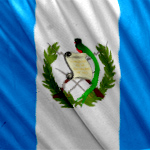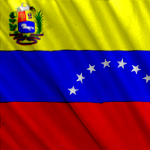- English
- Español
The Inter-American Convention on Transparency in Conventional Weapons Acquisitions (CITAAC) is a binding multilateral agreement to promote transparency and openness regarding the acquisitions of conventional weapons. Adopted in 1999, it came into force in 2002. It has been ratified by 17 OAS Member States and signed by 4 OAS Member States. Through CITAAC, governments have committed to providing annual reports on their arms imports, exports, and national production. The exchange of this information can build trust and confidence in the region, and assist in the early identification and prevention of risks by excessive or destabilizing accumulations.
The Conference of the States Parties to the CITAAC is its highest political body, bringing together the high authorities of the States Parties to examine the operation and application of the convention. At the Conference, the States Parties determine the priorities to achieve compliance with the convention through the approval of Declarations, and Recommendations. In this II Conference, States Parties will take an important step to strengthen the Convention by analyzing documents to institutionalize the Consultative Committee and the Technical Secretariat as effective follow-up mechanisms to implement its dispositions.
Objectives
- Consider and approve the Draft Rules of Procedure of the Conference of the States Parties to CITAAC, and the Draft Rules of Procedure of the CITAAC Consultative Committee, key documents to promote the institutionalization and the strengthening of the Convention.
- Analyze the progress in the implementation of the Convention and consider potential additional transparency measures, including alterations to the list of Conventional Weapons.
- Discuss and establish priorities and objectives to advance in the fulfillment of the provisions of the Convention.
- Encourage cooperation between the States Parties.
Presidency
4 Signatory Countries
More information
Documents
- Draft Agenda
English | Español | Português - Draft Schedule
English | Español | Português - Draft Rules of Procedure of the Consultative Committee of CITAAC
English | Español | Français | Português - Draft Rules of Procedure of the Conference of States Parties to CITAAC
English | Español | Français | Português - Invited Guest List
English | Español | Français | Português - Draft Recommendations
English | Español | Français | Português - Informative Note
English | Español | Français | Português - Inter-American Convention on Transparency in Conventional Weapons Acquisitions
English | Español
Meetings
- Second Preparatory Meeting
(April 07, 2022)
Virtual - First Preparatory Meeting
(March 24, 2022)
Virtual























